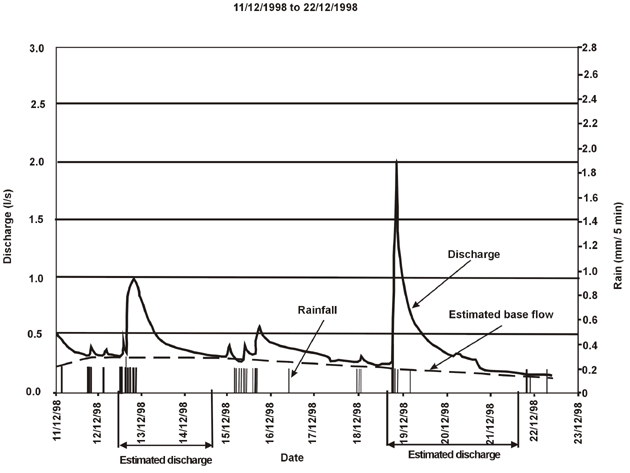

SuDS-related links
Keeping ahead
with SuDS
Attend SuDS training to keep ahead of the competition and to deliver innovative solutions in line with recognised good practice.
home > pervious surfaces > hydraulic performance
Once the rainwater has entered the pervious surface it may flow out of the
construction through the base to groundwater or, if the construction is undersealed,
the waters will be intercepted by a drainage network and discharged from the
sub-base to a suitable receiving drainage system. Comparison of the outflow
hydrograph at the drain outlet from an impermeable surface with that for a
drain receiving outflows from an impermeable surface, reveals marked differences
in performance.
The porous surface and its sub-structure responds to rainfall much slower
than the impermeable surface and continues to discharge for much longer, hours
and even days after rainfall stops. For example, a typical hydrograph (as
below) has shown that the first outflow from the porous surface was some three
hours after start of rainfall and discharge continued into a second day, although
there were additional, smaller rainfalls within the event. This effect is
known as attenuation.

Pervious surfaces and their sub-structure may significantly modify outflow hydrographs to drainage systems and downstream impacts are reduced unless there is surface runoff in extreme storm conditions. This is achieved by either infiltrating the rainwater through the surface and into the sub-soil or alternatively retaining the rainwater within the pervious construction. This can be achieved by the installation of an impermeable geomembrane to the base and sides of the underlying construction to form a tank structure.
For further information on Hydraulic design criteria click here.